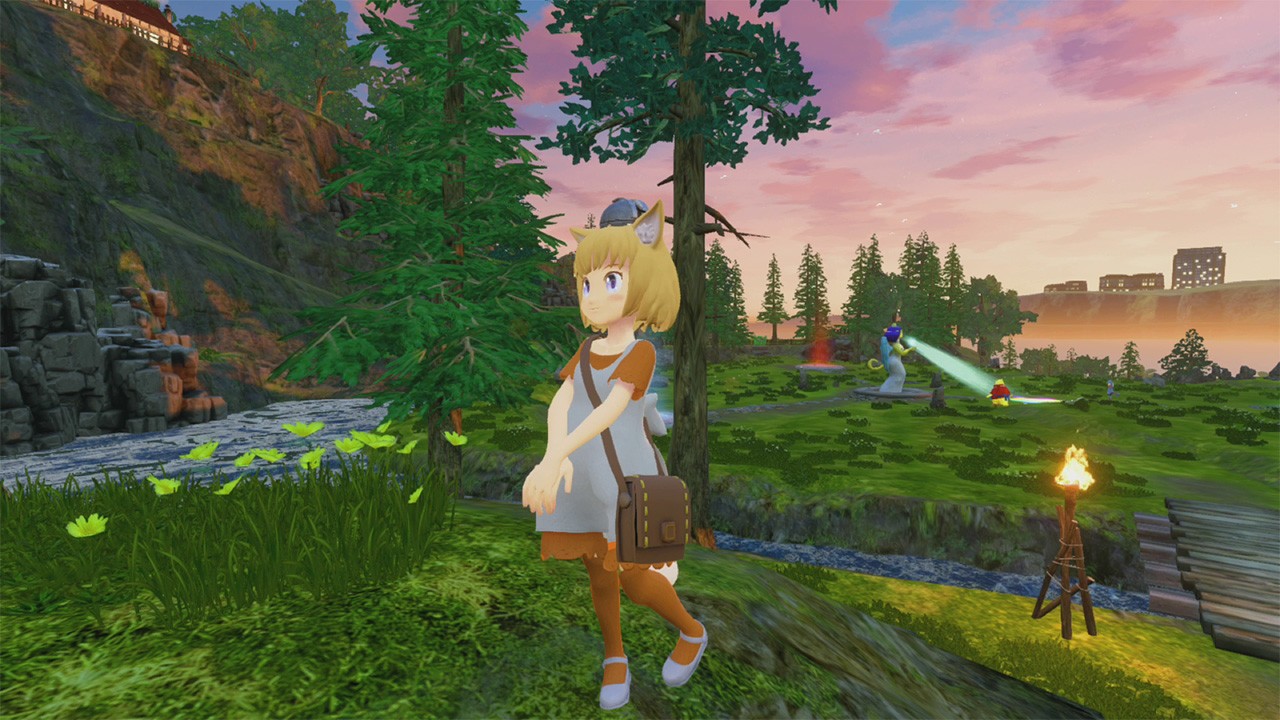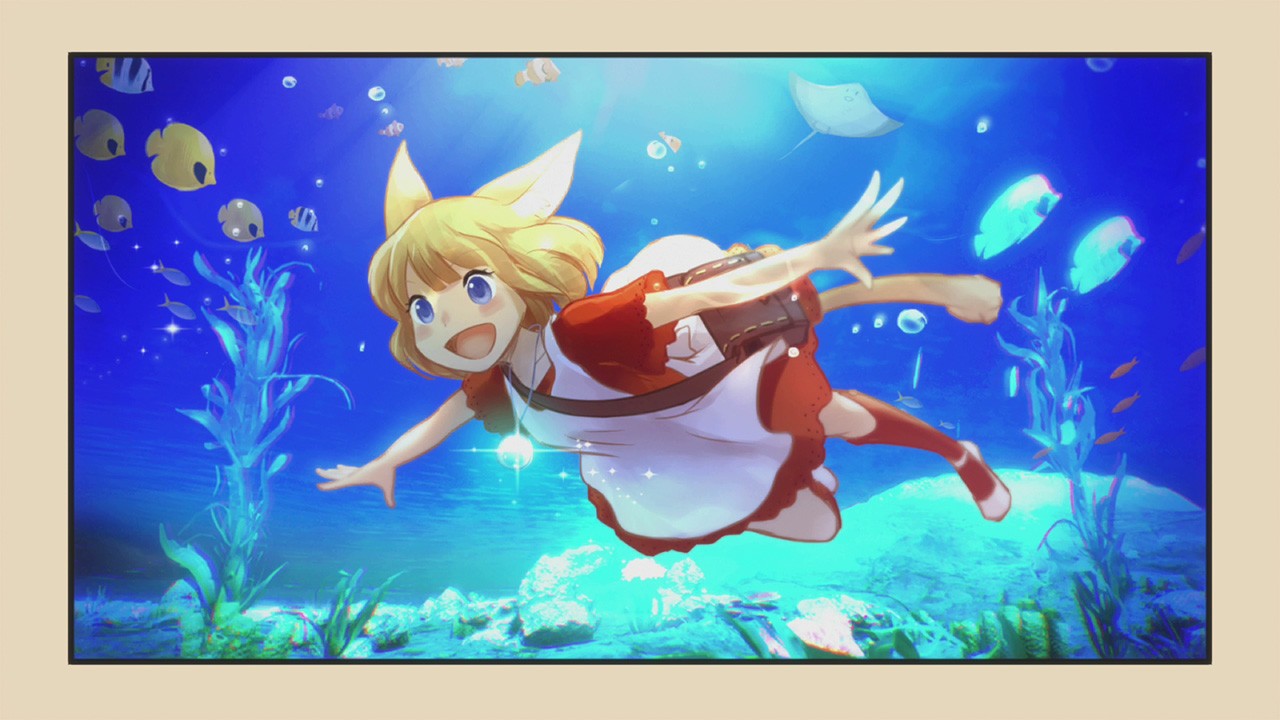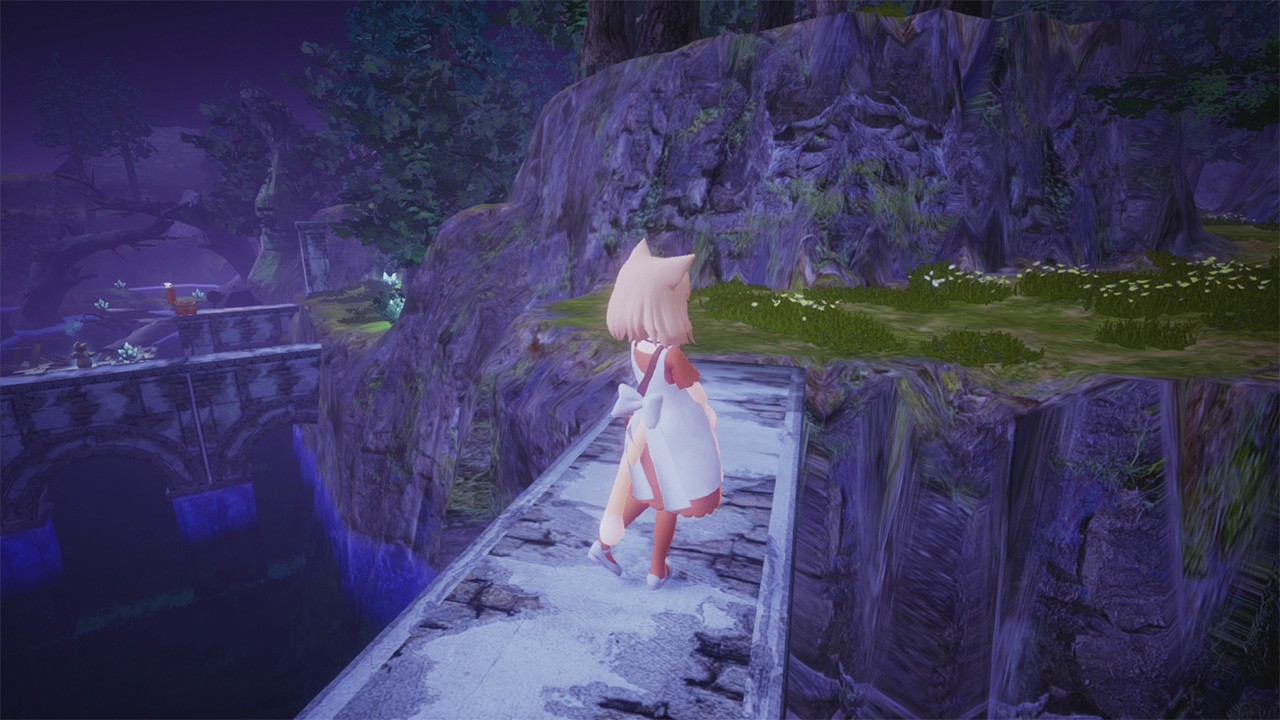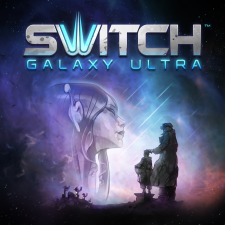
I remember when I first saw Giraffe and Annika on the NIS America website, where I like to buy collector’s edition box sets of video games that catch my attention. The trailer left me with more questions than it answered: what is the gameplay like outside of the rhythm mini-game? Does it control as stiffly as it looks? Is the world open or rife with invisible barriers? I knew from their newsletter that there would be collectables (and community designed ones, no less), which adds some longevity to the core gameplay, but that was about it. In any case, I didn’t order the box set because I had a niggling feeling that my gut is seldom wrong. Now that I’ve spent some time with Giraffe and Annika, I can confidently answer these questions.
Giraffe and Annika is a 3D adventure game by developer Atelier Mimina. It’s the studio’s very first title and it made it’s debut on PC a year ago before finding its way to console. In Giraffe and Annika, you play as a young cat-eared girl named Annika, who awakens with no memory (per the usual hero archetype of games originating from Japan) in a whimsical world full of scenic sights and ghosts.
When you start, you’re immediately given free roam of the area, during which you’ll stumble upon a house belonging to a woman named Lily. During this time, I picked up apples and pumpkins from a garden, just because, and found a rucksack that triggered a memory of a faceless woman creating it as a gift for someone who is heavily alluded at being Annika. From there, you meet Giraffe, the other titular character, who asks you to gather shards from the three dungeons found in this world because he’s the only one on this world who can’t get past the barriers protecting them and you can. Which doesn’t seem shady at all. That’s really all the explanation you get for visiting these hazardous locations initially, and for whatever reason Annika is willing to do it for someone who, at least to her knowledge, she’s meeting for the first time. Story isn’t the strongest aspect of Giraffe and Annika, particularly early on where everything just seems arbitrary.

Most of the time spent with Giraffe and Annika consists of walking around the world, whether in dungeons or out of them. Outside of the limited number of dungeons, you’ll encounter a handful of strange characters, all of whom are certainly whimsical, but not all that interesting. They’ll give you generic fetch quests to move the story along and that’s their entire purpose. The most entertaining character to me was the game-saving NPC, Mrs Save, who looks like a child’s art project. She’s only good for a smile and a nod the first time you met her, after which she’ll repeat the same line of text—much like everyone else. As a result, you get a bland, empty world. Inside of dungeons is a kind of puzzle platforming section where you avoid ghosts, who will damage you on contact, and go from point A to point B. This, too, is dull, as all Annika can do is walk past enemies. There’s some presence of box pushing to create viable pathways and those boxes slide across the ground as if they’d been buttered. Otherwise, you’re just walking, walking, walking. Your propensity to roam isn’t helped by the fact that, while inside a dungeon, there’s no map or journal and it’s therefore sometimes difficult to tell what needs to be done or where you need to go.
And then there’s water. Giraffe and Annika has some of the worst swimming controls I’ve encountered in a video game. Honestly, it probably would have been less frustrating if the developer had just taken the easy way out and made it so that water was inaccessible or resulted in instant death. Until you get the item from the Ocean Dungeon that allows you to stay underwater for longer periods, falling in is basically a death sentence. You can hold ZR to surface, but for whatever reason Annika bob’s in the water as though there’s some invisible hand is taking hold of her head and holding it under. The result? You drown 99% of the time.
After you’ve successfully navigated the dungeon, you’re presented with a battle in the form of a rhythm game. Why the staff that you use to launch attacks back at the enemy isn’t available during the bulk of the gameplay is a mystery and not a decision that works in Giraffe and Annika’s favour from an engagement perspective. There are three battle difficulties, which can be selected from the outset of the battle. Battles can be replayed at a later time to get the highest possible score.
The controls for the rhythm game are pretty simplistic, especially for those who enjoy the genre: you move Annika left or right to intercept the enemy attack and you either tap or hold a with good timing. Every successful attack deflected damages the enemy, whereas Annika takes damage when you fail to tap to the beat. This mini-game is the most engaging part of Giraffe and Annika and is sadly infrequent.

After you’ve won the battle, Annika is rewarded with a shard for the necklace she wears, which unlocks an additional skill. These are lacklustre; the first is the ability to jump and it’s got what feels like a 2-inch clearance. They certainly don’t feel like a worthwhile reason to tool around dungeons, avoiding ghosts and getting lost, so you’d have to be really invested in finding out more about Annika’s lost memory for a playthrough to be even remotely worthwhile.
Those collectables I mentioned are found in chests and there are graphics nearby to indicate the presence of one. Because they were provided by the community, their quality varies greatly, but the general feeling is that they’ve been doodled by children. It suits the childlike sense of wonder Giraffe and Annika tries to instil. There’s no bonus for collecting all of these “meowsterpieces” as they’re called, save an in-game achievement, so additional playtime spent searching high and low for collectables will vary.
Giraffe and Annika isn’t a graphical champion by any means. The 3D character models are nice enough, but there’s a definite fuzziness to them that’s probably a result of the chosen graphics engine. The comic book style used to deliver the narrative is the real winner here and the artists definitely had some fun with it, making it as colourful and cutesy as possible. The music is peaceful and on the performance side of things, there are frequent load screens when moving between areas, before and after the comic book style narrative, and in lieu of actual animation; i.e walking up a ladder or through a door. I also found one bug during the rabbit children’s quest, where the system said I’d found all of them even though I hadn’t. Because I hadn’t, I couldn’t continue with the story and, since this was a timed event, I had to keep doing it again and again before finally finding each rabbit within the time limit. Sure enough, I got the same confirmation that I’d found them all twice; once after the second to last rabbit and once after the actual last rabbit.
Bottom Line
Giraffe and Annika looks and sounds good, but the absence of engaging gameplay mechanics makes it difficult to appreciate the carefully crafted atmosphere. I wanted to like it, but I couldn’t. I was too frustrated by the wooden controls and there wasn’t enough reason to power through them. It’s a good first attempt for this new development team, but it certainly needs some polish.
REVIEW CODE: A complimentary Nintendo Switch code was provided to Bonus Stage for this review. Please send all review code enquiries to press@4gn.co.uk.
Subscribe to our mailing list
Get the latest game reviews, news, features, and more straight to your inbox
Thank you for subscribing to Bonus Stage.
Something went wrong.
Giraffe and Annika Review
-
Gameplay - 4/10
4/10
-
Graphics - 4/10
4/10
-
Sound - 5/10
5/10
-
Replay Value - 5/10
5/10
User Review
( votes)Overall
Summary
Giraffe and Annika’s cutesy appearance and calming atmosphere aren’t able to soothe the sting of shoddy controls and lacklustre gameplay.
Pros
- Charming appearance and atmosphere.
- Calming OST.
Cons
- Flat, empty world.
- Shallow gameplay.
- Poor controls.





